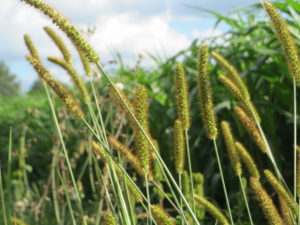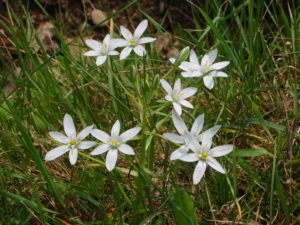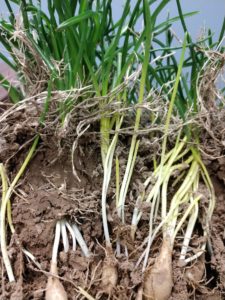Q&A with Seth Nagy- Foxtail, Star of Bethlehem, and Soil Testing
go.ncsu.edu/readext?584402
en Español / em Português
El inglés es el idioma de control de esta página. En la medida en que haya algún conflicto entre la traducción al inglés y la traducción, el inglés prevalece.
Al hacer clic en el enlace de traducción se activa un servicio de traducción gratuito para convertir la página al español. Al igual que con cualquier traducción por Internet, la conversión no es sensible al contexto y puede que no traduzca el texto en su significado original. NC State Extension no garantiza la exactitud del texto traducido. Por favor, tenga en cuenta que algunas aplicaciones y/o servicios pueden no funcionar como se espera cuando se traducen.
Português
Inglês é o idioma de controle desta página. Na medida que haja algum conflito entre o texto original em Inglês e a tradução, o Inglês prevalece.
Ao clicar no link de tradução, um serviço gratuito de tradução será ativado para converter a página para o Português. Como em qualquer tradução pela internet, a conversão não é sensivel ao contexto e pode não ocorrer a tradução para o significado orginal. O serviço de Extensão da Carolina do Norte (NC State Extension) não garante a exatidão do texto traduzido. Por favor, observe que algumas funções ou serviços podem não funcionar como esperado após a tradução.
English
English is the controlling language of this page. To the extent there is any conflict between the English text and the translation, English controls.
Clicking on the translation link activates a free translation service to convert the page to Spanish. As with any Internet translation, the conversion is not context-sensitive and may not translate the text to its original meaning. NC State Extension does not guarantee the accuracy of the translated text. Please note that some applications and/or services may not function as expected when translated.
Collapse ▲This week I want to share three questions we received at the N.C. Cooperative Extension, Caldwell County Center. I hope you find these questions and their answers helpful.
Question: Foxtail is taking over my hay field. What can I do to control this weedy grass?

Yellow foxtail is a weedy annual summer grass in hay fields. Preemergent herbicides are now available to control this pest. (photo credit: AnRo0002).
Answer: Foxtail is an annual grass that germinates in the spring when soil temperatures are an average of 65 degrees for three consecutive days. Foxtail is typically a problem for the second hay cutting.
In 2017, Prowl H2O was registered for use in pastures and hay fields. Prowl is a preemergent herbicide with the active ingredient pendimethalin. A pre-emergent herbicide is a great tool for controlling annual weeds prior to their germination.
For the preemergent to be effective, it must be applied before the weeds germinate. Typically, foxtail starts to germinate in Caldwell County mid to late May. Applying Prowl H2O two weeks before expected germination will provide 8 weeks of weed control.
Besides foxtail, Prowl will also control other annuals such as crabgrass, goosegrass, fall panicum, and pigweed. Also of importance are restrictions. There is a grazing restriction of 60 days and a hay restriction of 45 days. These restrictions are the time between making the herbicide application and when the forage can be grazed or harvested for hay.
Also, for the application to be effective, it must be rain activated within two days of application. For complete details about Prowl H2O, read the pesticide label.
Question: What is this weed?

The star-of-bethlehem is very pretty but is a weed when it spreads into unwanted areas. (photo credit: Hectonichus).
Answer: This plant is called star-of-bethlehem. These plants are native to Europe and North Africa.
They can be found in lawns, pastures, golf courses, and crop fields.

The star-of-bethlehem grows in the winter from bulbs in the soil, just like daffodils or tulips. (photo credit: Seth Nagy).
Star-of-bethlehem is a herbaceous perennial bulb. The leaves are narrow with a light green midrib. The flowers are white to pale yellow in color with six star-like petals. It is a member of the Liliaceae family.
Aim is a herbicide that will control this weed in commercial and agricultural settings. The active ingredient in Aim is carfentrazone. This product is not registered for use in home lawns. Hand digging is an effective way to remove this weed from residential settings, or the herbicide Speedzone can be used.
Question: How do I take a soil sample of my yard?
Answer: Taking a sample of your soil is the first step in soil testing. Soil testing is a predictive test which estimates soil nutrients available for plant uptake.
Improperly collected soil samples are the weak link in the soil testing process. A soil probe is an essential tool to easily take a good sample. The soil probe is used to extract a ¾ inch soil core. When sampling a lawn or pasture, the core should be taken to a depth of 4 inches. Four inches is considered the effective rooting zone of grass. A good soil sample consists of 12 to 20 cores of soil taken from the field or lawn area. These cores are all thoroughly mixed together and placed in a cardboard soil sample box.
When sampling, avoid small areas where soil conditions differ markedly from those in the rest of the field or lawn area. These include wet areas, severely eroded areas, or any area that does not match with the rest of the field or lawn area. If these unique sites are large enough, they can be sampled separately.
Soil samples are usually analyzed within one or two weeks of the time they are received by the N.C. Department of Agriculture and Consumer Services’ Soil Lab in Raleigh. There is a $4 charge to analyze each sample from December thru March. There is no charge for soil analysis from April through November.
Once an analysis is complete, the soil test report is posted on the Agronomic Division’s website, and an email notification is sent to the client.
To make the process easy, the N.C. Cooperative Extension, Caldwell County Center has soil sample boxes and soil forms, and we lend soil sample probes as well. I suggest taking a soil sample every three or four years.
If you have questions about weed identification, weed control, or soil sampling in your lawn or pasture, please contact Seth Nagy, County Extension Director at the N.C. Cooperative Extension, Caldwell County Center at 828-757-1290 or by email at seth_nagy@ncsu.edu.




